How to Turn an Ordinary Backyard into a Bespoke Outdoor Living Space with Eva Holbrook
We talked with Eva Holbrook, queen of California outdoor living spaces, about how she transforms a backyard into a Zen-like-sanctuary where every detail honors its surroundings
Outdoor living spaces are the latest sensation in home design. But they’re more than just a current obsession — these spaces are an opportunity to extend your home beyond its walls, while maximizing the peace and tranquility often associated with time spent outdoors.
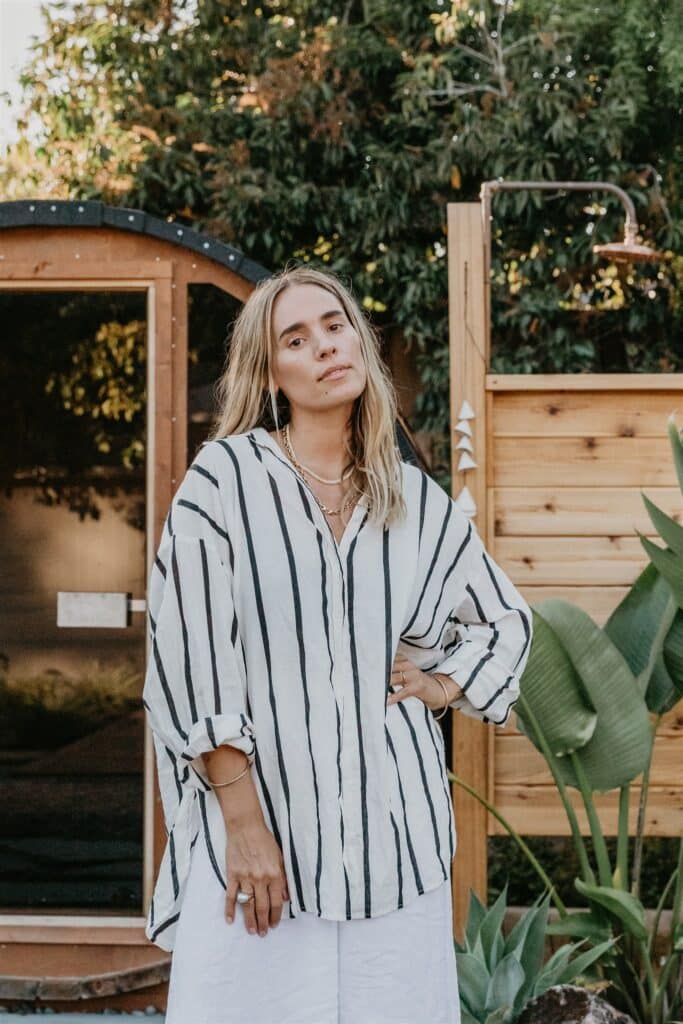
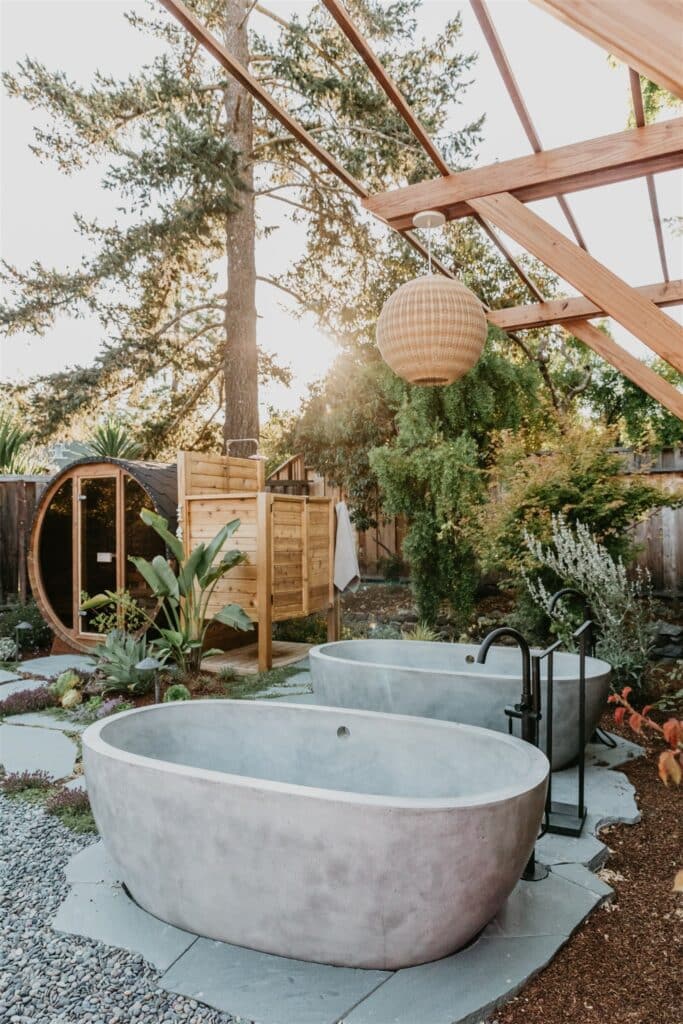
Designer Eva Holbrook, left, poses in her Mill Valley backyard renovation featuring two NativeStone Avalon 72 bathtubs in Ash, right
Eva Holbrook (left), a California-based interior designer who specializes in transforming homes into living sanctuaries, has become just as well-known for her enchanting exteriors.
Follow along with us as we highlight her transformative Mill Valley project, plus get her tips and tricks for creating a backyard oasis of your very own.
Bathing under the stars is certainly whimsical – and also – utterly restorative.
We’ve noticed that you’ve integrated a soaking tub into several of your outdoor spaces. Can you share with us why you like this feature and also, tell us about your recent Mill Valley project, which prominently features not one but two Native Trails Avalon 72 tubs?
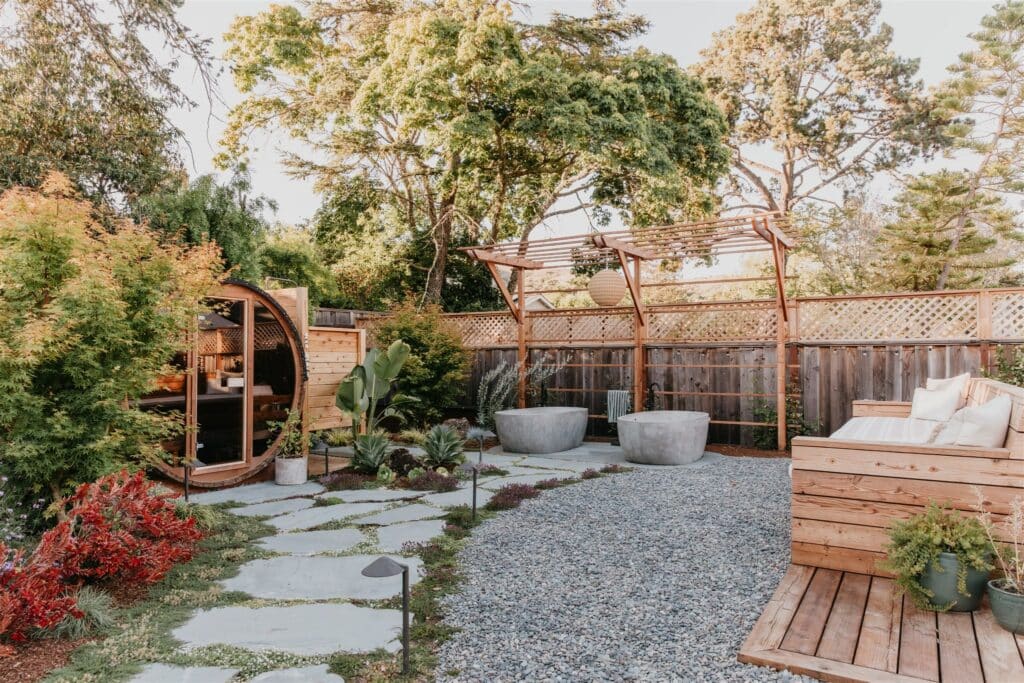
I love bathing. I love spas. I love natural hot springs. I love bathhouses.
My mom took me to a traditional Korean spa when I was 14, and that was my first experience. In America, we don’t really have a bathing culture like Nordic countries or Asian countries do. I really like pulling inspiration from different bathing cultures, so, I’m always seeking that out everywhere that I go.
For the Mill Valley property, we kept their backyard bare for years following their interior renovation because I was like, “You guys, honestly, just wait. It’s such an amazing, big yard. Just save your money. Let’s just do it right when you have the budget.” Then, finally, they were ready.
The design started off more whimsical. We were going to do clawfoot tubs, and it was going to be more romantic, European, Italian, with the wisteria over the tubs. But the way that it started coming together with the sauna, and the native plants … clawfoot tubs started feeling not right for the space.
That’s when we switched the tubs to the Native Trails tubs; everything started coming together once we switched the tubs. It ended up being perfect – more modern and Japanese inspired, cleaner lines.
Have you received any feedback from the owners on how they use the space? How frequently?
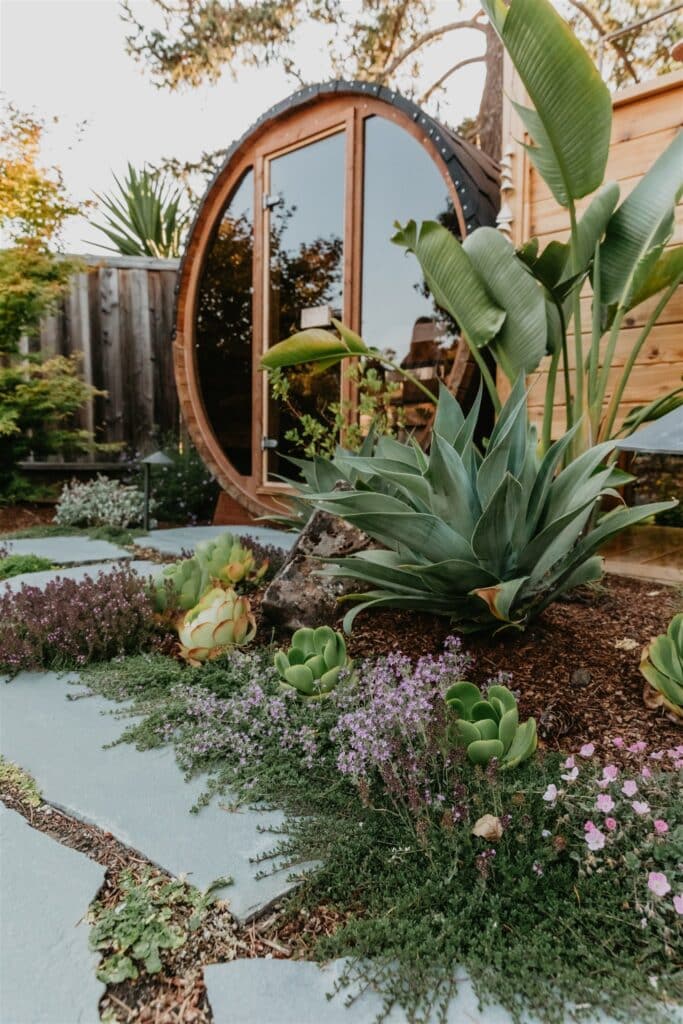
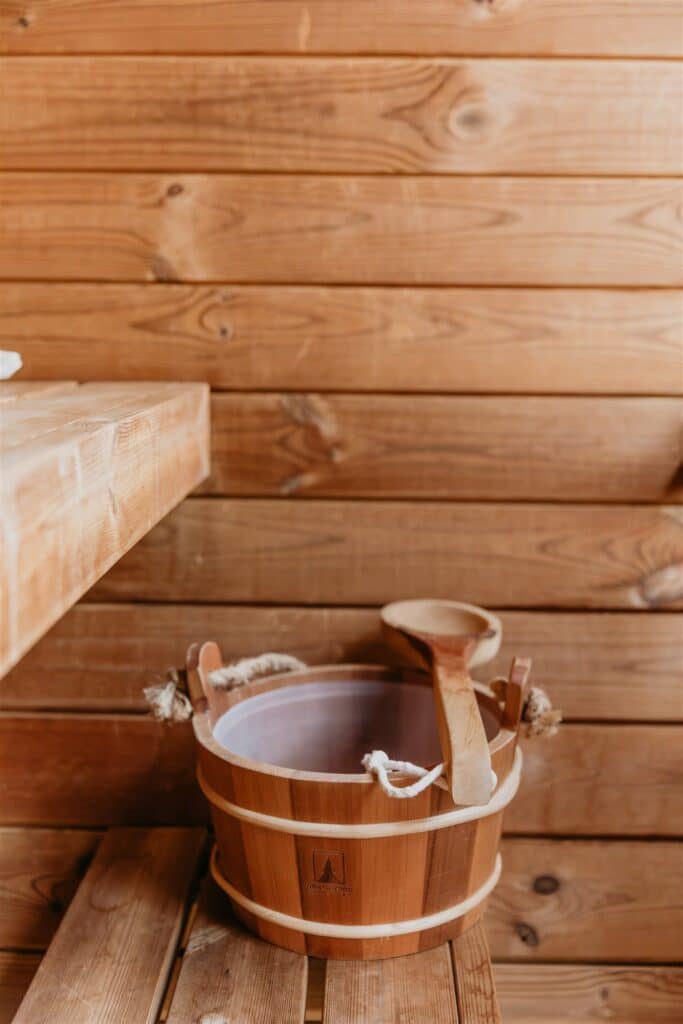
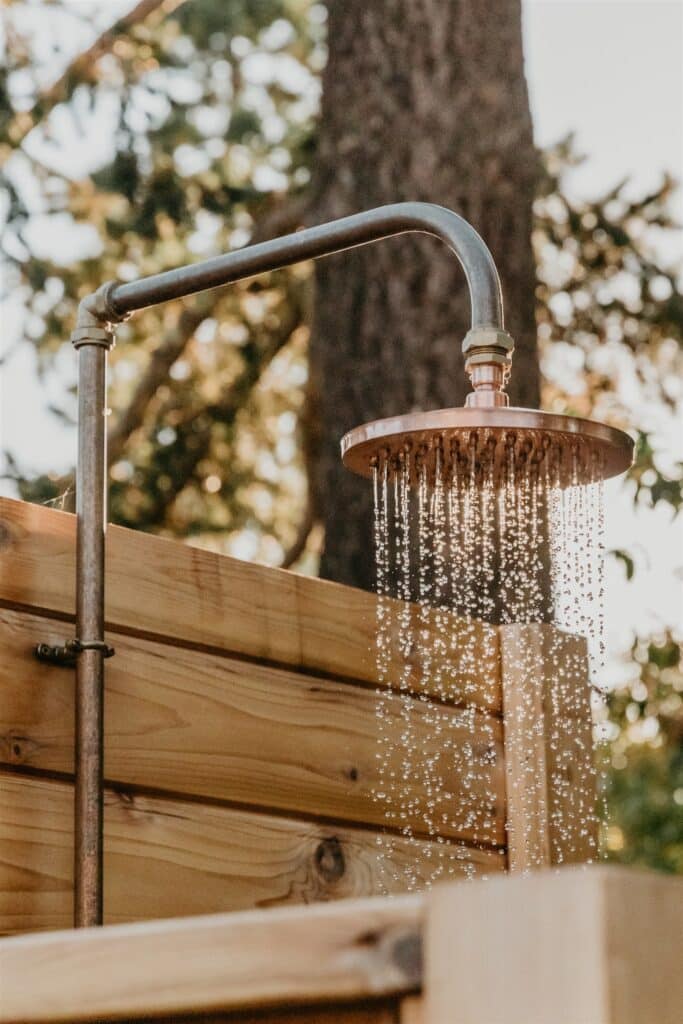
Yes – they use it every day!
They use the sauna and then take a bath after that. They also use the tubs as cold plunges. It’s the Bay Area, so it’s pretty chilly a lot of the year; water comes out of the tap cold. They’ll fill one up to use as a cold plunge after the sauna, and then, at night, they’ll use them as hot baths.
It’s really nice to have the freedom to use the tubs in both of those ways.
Obviously there isn’t a simple formula that you can follow to achieve the perfect outdoor living space, but can you share some of the elements you consider when creating yours?
1. Furniture
Do you have any go-to brands and/or pro-tips when it comes to outdoor furniture?
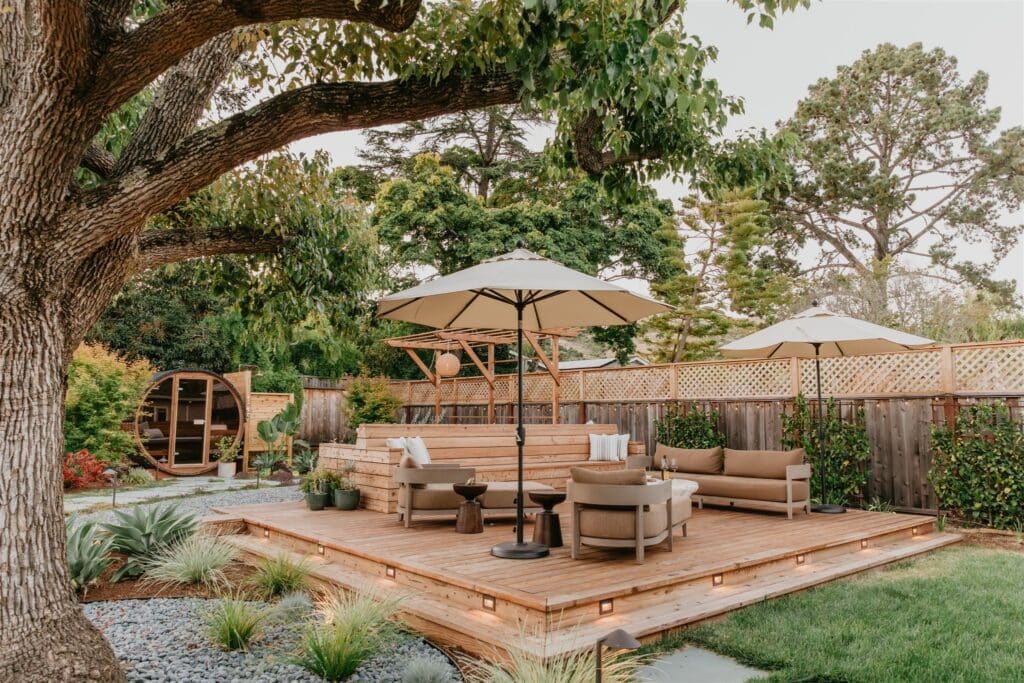
Whenever I can, I like to build the furniture into the deck. Because otherwise, outdoor furniture tends to get trashed. It’s hard to maintain.
Lately, I have been using a lot of Restoration Hardware outdoor stuff because they have such so many fabrics to choose from. I do a lot of my work virtually, so it’s nice to work with a major retailer; we can interface more easily. The homeowners can go to the showroom, and we can reference the samples without being in the same place at the same time.
2. Lighting
Are there any outdoor lighting sources that you can recommend?
Unfortunately, no. I look all over – I go into the depths of the internet. Lighting is always the hardest thing to find.
3. Add Reclaimed Elements
We’ve noticed that you use reclaimed and sustainable materials in your designs when you’re doing outdoor spaces. As a company that strives for the same, we love this!
Can you share what the process of sourcing those items looks like for you?
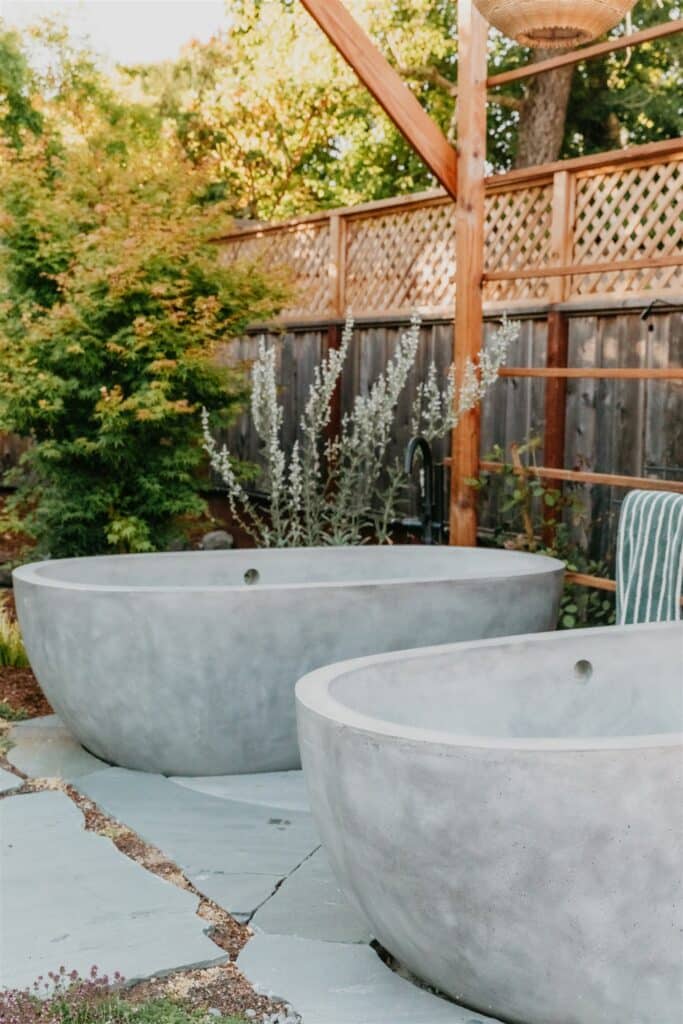
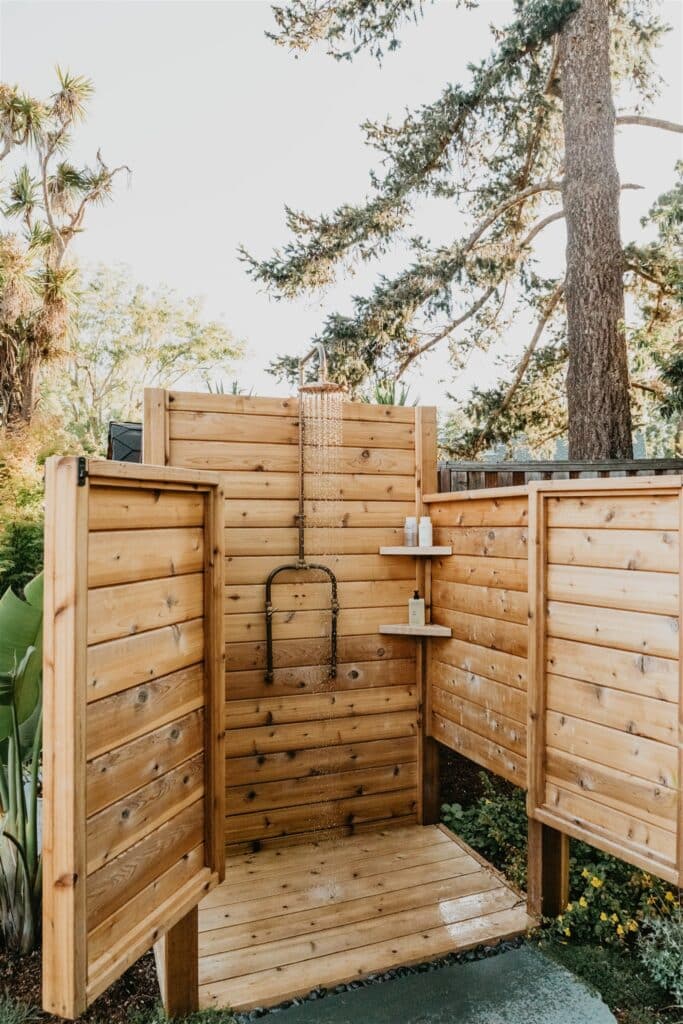
I try to.
Decking choices are redwood or cedar, and you have to make sure that you’re sourcing it from a business that has the FSC certification. Also, you definitely have to pay more to use things that are reclaimed. Even though it seems like those items should be less expensive, actually, sometimes it’s more expensive (and can be more difficult to integrate).
Even though there’s an awareness around it, it’s still not the norm in the industry. But it’s becoming more so, which is cool.
4: Simple Landscaping
Outdoor spaces are never as easy as 1-2-3. Do you have any pointers for homeowners looking to DIY their space?
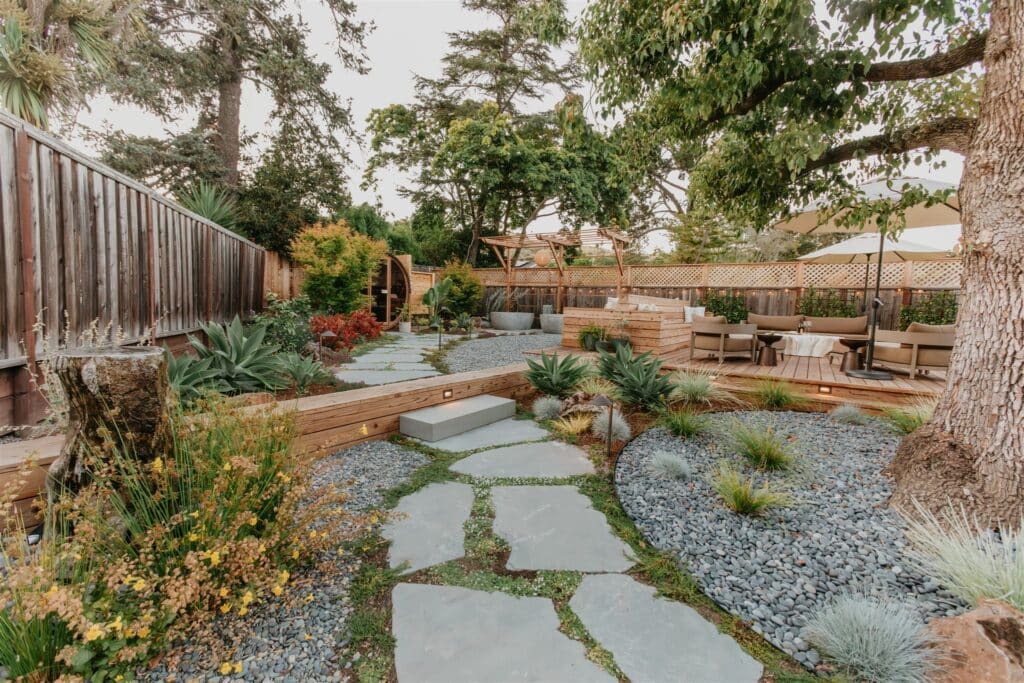
Yes, landscaping is the most important thing. That’s what really makes the space come to life. I think it’s important to do the research, to find local native plants or find a gardener or landscaper, someone who you can work with a local nursery. You don’t want to plant things that are harmful to the bees, pollinators and animals.
And then I guess, just really think about how you want to use the space and how it can grow with you.
And simplicity. That’s something that I always come back to. Not overdoing, not over-designing, and actually stripping down more and more. That also makes it easier for someone who’s trying to do it on their own.
5. High-Quality Materials
Finally, I think if you invest in nice quality materials that are going to withstand time, then you don’t really need a lot of other fluffy design stuff.
Want more inspiration? Click here to view our design gallery!
